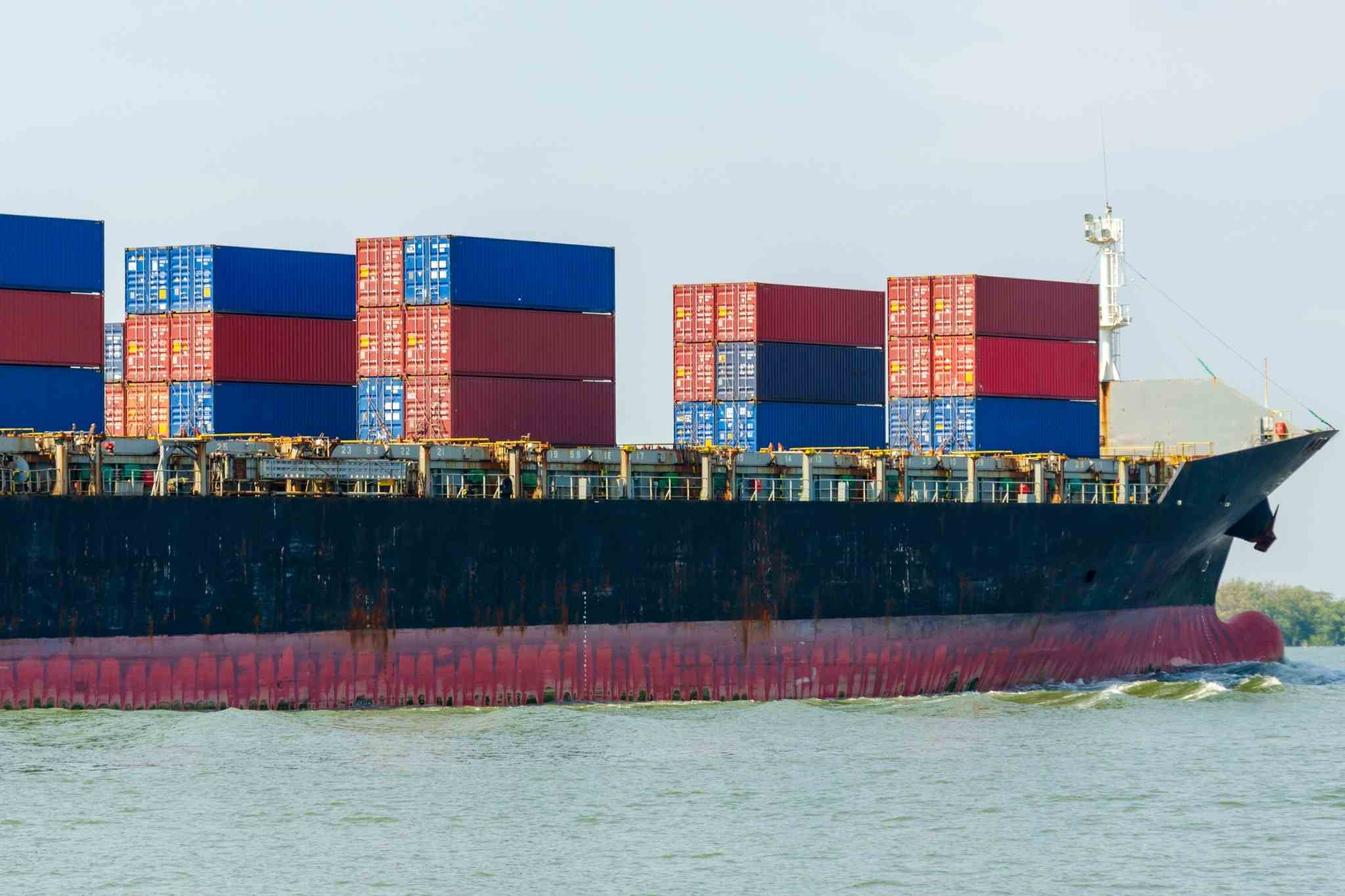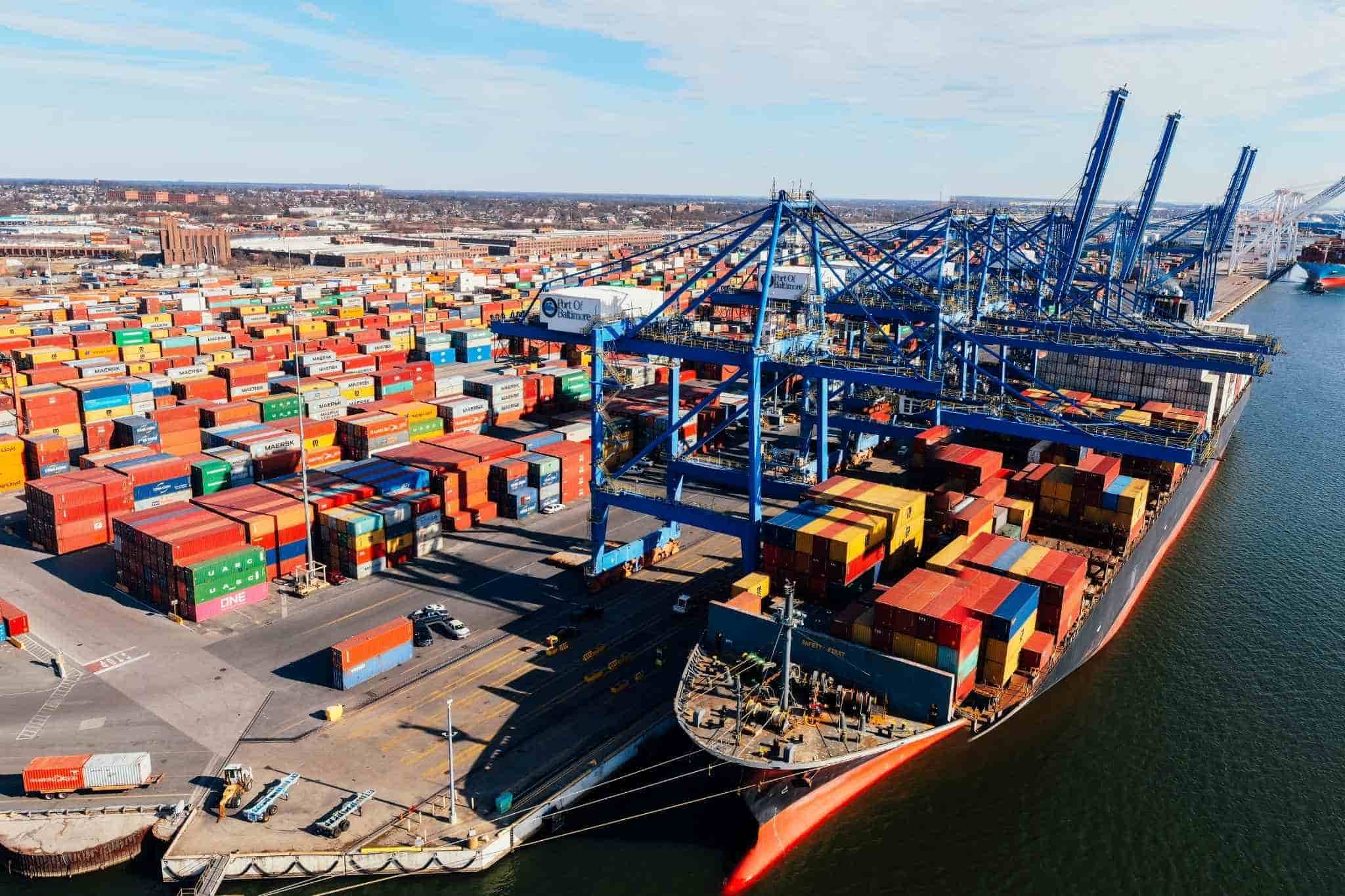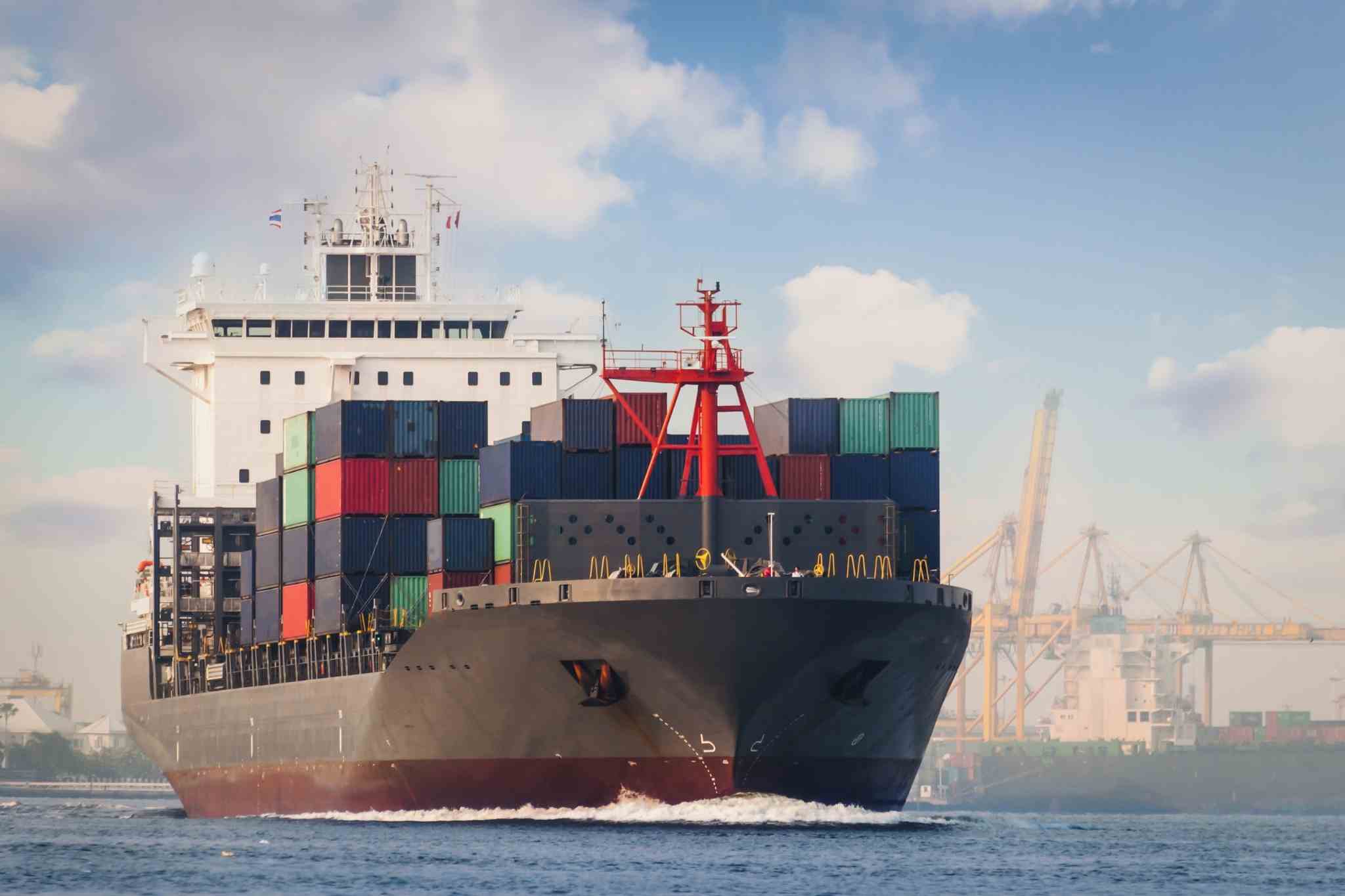Table of Contents
Key Takeaways✔ Consolidated shipping involves combining multiple shipments into one larger load to save costs and improve efficiency. ✔ Consolidated shipping works by collecting, grouping, and packing shipments together before transporting them to a shared destination. ✔ The key benefits include reduced expenses, better space utilization, and fewer trips that help the environment. ✔ Consolidated shipping is best used by small businesses or individuals with smaller, non-urgent shipments that do not fill an entire container. ✔ Common mistakes include poor packaging, inaccurate documents, unrealistic delivery expectations, unsuitable cargo, and weak communication with freight forwarders. |
Consolidated shipping plays a crucial role in making transportation more efficient and cost-effective for many businesses. It allows smaller shipments to move together in a way that saves money and reduces unnecessary trips. This approach also helps improve delivery schedules and manage resources more effectively, which is important for businesses of all sizes.
Here are the key points to know about consolidated shipping and why it matters.
 What Does Consolidated Mean in Shipping
What Does Consolidated Mean in Shipping
Consolidated shipping is a shipping method where multiple smaller shipments from different shippers are combined into a single larger shipment. This process is usually managed by a freight forwarder or consolidator.
The goal is to maximize space in a container and lower the overall cost of transportation for each shipper involved. Once the container reaches its destination, the shipments are separated, or deconsolidated, and delivered to their final addresses. This method is often used for less-than-container-load (LCL) shipments.
How Consolidated Shipping Differs From Other Shipping Methods
Consolidated shipping stands out because it groups multiple small shipments into one larger load. This is different from other shipping methods that might move goods individually or without combining them with other shippers’ cargo.
- Combination of Shipments: Consolidated shipping combines smaller shipments into one container using freight consolidation services, while methods like full container load (FCL) shipping dedicate the entire container to a single shipper.
- Cost Savings: Consolidated shipping allows shippers to share transportation costs with others by shipping multiple orders together. In comparison, FCL or individual shipping requires each shipper to pay for the full container or the entire transport cost on their own.
- Transit Times: Consolidated shipping can take longer because the container must be filled with multiple shipments and then unpacked at the destination. Other methods, like direct shipping, typically offer faster delivery since goods move directly without grouping or ungrouping.
- Flexibility for Small Loads: Consolidated shipping is especially useful for small businesses or shippers who do not have enough goods to fill a full container. Other methods may be less flexible for smaller shipments.
How Consolidated Shipping Works
What does consolidated mean in shipping and how does it work? Consolidated shipping is a process that allows multiple smaller shipments from different customers to be combined into one larger shipment. This method makes transportation more cost-effective and organized, especially for businesses sending smaller loads that do not fill an entire container.
Steps Involved In The Consolidation Process
The consolidation process follows several simple steps that ensure goods are safely combined and delivered to their final destinations.
- Collection Of Shipments: All small shipments are picked up from different shippers and brought to a central warehouse consolidation center or facility. This helps ensure every item is accounted for before the consolidated shipping process begins.
- Sorting And Grouping: Once in the facility, shipments are sorted based on their final delivery locations. Grouping similar destinations together allows for faster and more organized transportation.
- Packing Into A Larger Container: The grouped shipments are placed into one large container or truck to maximize space and reduce costs. Using a single container minimizes empty space, keeps the goods more secure, and focuses on optimizing container space for greater efficiency.
- Transportation To Destination: The consolidated container is transported to the destination country or region using sea, air, or land. Moving a single container also helps simplify customs procedures and reduce transit costs.
- Final Delivery To Customers: Each individual shipment is delivered to its final customer after the container is unpacked. This ensures every package is sent to the correct address without unnecessary delays.
Who Is Involved: Carriers, Freight Forwarders, And Shippers
Several parties work together to make consolidated shipping possible, each with a specific role in the process.
- Carriers: Carriers are the companies that handle the actual transportation of goods by sea, air, or land. They are responsible for ensuring the consolidated container reaches its destination safely and on time.
- Freight Forwarders: Freight forwarders act as middlemen between shippers and carriers by managing logistics and paperwork. They coordinate the consolidated shipping process, often leveraging freight consolidation services, ensuring that space is booked and documents are prepared correctly.
- Shippers: Shippers are the businesses or individuals sending the goods in the consolidated load. They depend on freight forwarders and carriers to move their shipments efficiently and at a lower cost.
Common Scenarios Where It Is Used
Consolidated shipping is often used in situations where sending smaller shipments individually would be too expensive or inefficient.
- Small Business Shipments: Small companies that do not have enough goods to fill an entire container can combine their products with others. This approach lowers shipping expenses and makes it easier for them to compete with larger businesses.
- International Orders: Businesses that ship smaller orders overseas often use consolidation to reduce shipping costs and simplify customs clearance. It also helps streamline paperwork, which can be complex for international shipments.
- Seasonal Deliveries: When businesses need to ship products during busy seasons, consolidated shipping helps them share space and manage higher demand. This method allows them to avoid the higher costs of booking full containers during peak times while optimizing container space for maximum efficiency.
Top 6 Benefits of Consolidated Shipping
Apart from knowing what does consolidated mean in shipping, it’s also crucial to understand its benefits. Consolidated shipping offers several advantages for businesses and individuals who want a cost-effective and reliable way to send goods. It is especially useful for those shipping smaller loads because it combines multiple shipments into one, making the entire process more efficient.
1. Cost Savings
One of the main benefits of consolidated shipping is the significant reduction in expenses. Shipment consolidation allows a company to accumulate orders over a set period and then combine them into a single container or truck. This approach enables the distributor to spread fixed transportation costs across a larger number of items, resulting in economies of scale and lower overall shipping costs.
- Lower Freight Rates: Shipping companies can fill a single container with multiple shipments, which allows them to charge less per shipper. This means small businesses can take advantage of lower rates even when shipping smaller quantities.
- Reduced Packaging Costs: Fewer containers or pallets are required, which can reduce the money spent on packing materials. Businesses can also cut down on storage fees since fewer shipments require less warehouse consolidation center space.
2. Efficiency In Transport
Consolidated shipping improves the transport process by making it more organized and structured. It allows carriers to maximize space and reduce the number of trips needed to deliver goods.
- Better Space Use: By combining loads, space in containers or trucks is used to its full capacity, avoiding wasted space. This approach helps businesses ship goods more economically and reliably.
- Simplified Scheduling: Multiple shipments are moved at the same time, reducing the number of pick-ups and deliveries needed. This streamlining helps reduce delays and makes the supply chain run more smoothly.
3. Environmental Benefits (Fewer Trips)
This method also helps minimize negative environmental impacts by reducing the number of vehicles on the road. Shipment consolidation can lower harmful emissions, such as CO2 from delivery vehicle exhausts, improving air quality and supporting overall sustainability.
- Fewer Carbon Emissions: Fewer trips mean less fuel burned, which lowers the carbon footprint. Companies can use consolidated shipping as part of their efforts to reduce greenhouse gases.
- Less Traffic Congestion: Reducing the number of trucks or containers in transit helps decrease traffic and overall congestion on roads and ports. This leads to faster delivery times and fewer delays for all shipments.
4. Faster Customs Clearance
Consolidated shipping can also help shipments move through customs more quickly, especially when handled by experienced freight forwarders. Having organized paperwork for a single large shipment makes the process smoother.
- Streamlined Processing: A single combined shipment often requires fewer sets of documents than separate shipments. This efficiency can save time and reduce costly mistakes in documentation.
- Lower Risk of Delays: With clear and organized paperwork, shipments are less likely to be held up at customs. Faster clearance means goods reach their final destination sooner.
5. Increased Reliability
Another benefit is that consolidated shipping is usually handled by logistics companies with strong experience and networks. This professional management ensures cargo is moved safely and on time.
- Professional Handling: These companies manage the entire process carefully to avoid damages and delays. Experienced freight forwarders also know how to handle unexpected shipping issues.
- Better Tracking: Most freight companies provide tracking tools, making it easier to see where the shipment is at any point. Having access to updates improves planning and communication for businesses.
6. Improved Flexibility
Consolidated shipping allows businesses to adapt to changing shipping needs without committing to large shipments. It provides a practical solution for companies with varying order sizes.
- Smaller Shipment Sizes: Businesses can ship smaller loads more frequently, which is ideal for managing inventory. This helps avoid overstocking while keeping customers’ needs met, especially when using LTL (less than truckload) shipping for efficient transport.
- Multiple Destination Options: It is often easier to ship to different destinations in one combined load, saving time and effort. This flexibility allows companies to expand their market reach.

When to Use Consolidated Shipping
Consolidated shipping can be a smart choice for those who want to save money and maximize space during transport. It works best in situations where smaller shipments can be grouped together, such as with LTL (less than truckload) shipping, allowing businesses and individuals to reduce costs and simplify logistics.
Best Situations for Small Businesses or Individuals
Consolidated shipping is especially helpful for small businesses or individuals who do not need to ship large volumes of products at once. It allows them to share transportation space with other shippers, reducing overall shipping expenses.
- Limited Order Volumes: Small businesses or individuals who only ship a few boxes or pallets at a time can avoid paying for unused space in a truck or container. This approach helps them access affordable freight rates through consolidated shipping.
- Lower Shipping Budgets: Those working with smaller budgets can benefit by combining their shipments with others, lowering transportation costs without compromising freight consolidation services quality. Using consolidated shipping allows them to stay within budget while still meeting delivery needs.
- Occasional Shipments: Companies or individuals that do not ship on a regular schedule can save money by consolidating their orders instead of booking full-load services. This option helps maintain flexibility without paying for excess capacity.
Ideal Cargo Types or Order Sizes
Not all products are ideal for consolidated shipping, so it is important to consider the nature of the goods. Certain cargo types and order sizes make the most sense for this method and can help ensure smoother transport.
- Small To Medium-Sized Items: Packages that are lightweight, easy to handle, and fit well with other shipments are ideal for consolidation. They can be stacked and moved easily, which reduces the risk of damage, especially when handled through LTL (less than truckload) shipping.
- Non-Urgent Orders: Orders that do not require immediate delivery work well because consolidated shipping can take a little longer to organize and deliver. This method is perfect for businesses willing to wait a few extra days to save money.
- Durable Goods: Products that can withstand multiple handling points during transport are best suited for this option. Items like packaged goods, hardware, or sealed boxes travel better in consolidated loads.
Other Situations Where Consolidated Shipping Works Well
There are additional circumstances where consolidated shipping can offer major advantages. These situations typically involve balancing delivery schedules with the benefits of shared transportation.
- Multiple Delivery Points: Businesses that need to send products to various destinations can save on overall transportation costs by shipping multiple orders together. Consolidated shipping enables them to combine shipments, split deliveries efficiently, and reduce expenses while keeping logistics streamlined.
- Testing New Markets: Companies exploring a new market can ship smaller product batches to gauge demand before committing to larger shipments. This minimizes risk and saves money while learning about customer interest.
- Seasonal Stock: Businesses needing extra inventory during peak seasons can use consolidation to avoid the cost of full container loads. This shipping method ensures they get the additional stock they need at a lower cost.
5 Common Mistakes in Consolidated Shipping
Consolidated shipping can be a cost-effective and efficient method for moving smaller shipments, but mistakes during the process can lead to delays and added expenses. Understanding the most common errors allows businesses and individuals to plan better and avoid issues that could affect delivery times and overall costs.
1. Poor Packaging
One of the most frequent mistakes in consolidated shipping is using packaging that is not strong enough to handle multiple handling points. Goods are combined with other shipments, so weak or inadequate packaging can lead to damage and loss. Shippers should always use sturdy boxes, pallets, or crates and secure items properly to reduce the risk of breakage during transport.
2. Incorrect Documentation
Another common mistake is failing to complete shipping documents accurately. In consolidated shipping, missing or incorrect information on invoices, customs forms, or labels can cause delays at checkpoints. Ensuring all paperwork is correct and submitted on time helps shipments move through customs and delivery networks smoothly while optimizing container space for efficient transport.
3. Misunderstanding Delivery Times
Many businesses make the mistake of assuming consolidated shipping will be as fast as direct shipping. Because multiple shipments are combined and transported together, such as when shipping multiple orders together, delivery can take longer. Understanding realistic transit times can help businesses plan schedules more effectively and avoid customer dissatisfaction.
4. Not Considering Cargo Type
Placing unsuitable cargo in a consolidated shipping load is a mistake that can lead to problems. Fragile, oversized, or hazardous goods may require special handling and may not be ideal for this method. Shippers need to evaluate the type of products they are sending to ensure they are compatible with consolidation.
5. Failing To Communicate With Freight Forwarders
Lack of clear communication with freight forwarders is another issue that can affect consolidated shipping. Forwarders manage logistics, and without updated information, shipments may be delayed or misplaced. Maintaining consistent contact ensures that any problems can be addressed quickly and efficiently.
Frequently Asked Questions (FAQs)
What is the opposite of consolidated shipment?
The opposite of a consolidated shipment is a full container load (FCL) or a dedicated shipment. In this type, one shipper’s goods occupy the entire container or truck without being combined with other shipments. It is often used when there is enough cargo to fill the space or when faster delivery is needed. Unlike consolidated shipping, the cost is not shared with other shippers.
What is the difference between consolidated and non-consolidated?
Consolidated shipping combines smaller shipments from different customers into one container or truck to save costs. Non-consolidated shipping, on the other hand, moves each shipment separately, even if the container or truck is not full. Consolidated shipping is generally less expensive, but it can take longer because of multiple stops and sorting. Non-consolidated shipping is faster but often costs more because space is not shared.
What is an example of consolidation?
An example of consolidation is when several small businesses ship goods to the same destination and their shipments are combined into one container. This container is then transported as a single load, reducing the overall shipping costs. Once the container arrives, the shipments are separated and delivered to their final recipients. This process is a key part of consolidated shipping.
What does consolidating shipments per consignee mean?
Consolidating shipments per consignee means combining multiple shipments that are all intended for the same recipient into one larger load. This process is done at a destination service center or warehouse consolidation center to make the delivery more efficient and cost-effective. By grouping these shipments together, carriers can reduce the number of trips needed, which helps save time and transportation costs. It also ensures that the consignee receives all their goods in one coordinated delivery instead of multiple smaller ones.
Why is consolidation so important to a freight forwarder?
Consolidation is important to a freight forwarder because it allows them to move goods more efficiently while lowering costs. By combining smaller shipments from different customers into one larger load, freight forwarders can negotiate better rates with carriers and maximize container or truck space. This approach reduces overall shipping expenses and improves delivery scheduling. It also helps reduce the environmental impact by decreasing the number of separate trips needed.

Get Expert Help With Consolidated Shipping in New York City!
3PL Logistics By Best provides professional consolidated shipping services designed to meet the needs of businesses in New York City. As a trusted provider, 3PL Logistics By Best combines smaller shipments into one larger load, helping companies in New York City reduce costs and improve delivery efficiency. Each step of the process is handled with care, ensuring that every shipment is delivered safely and on time.
Contact 3PL Logistics By Best today to schedule consolidated shipping services in New York City!

